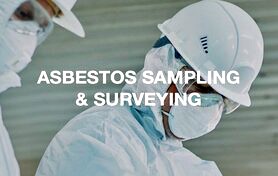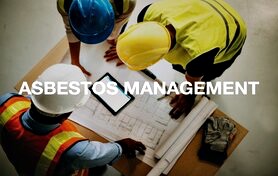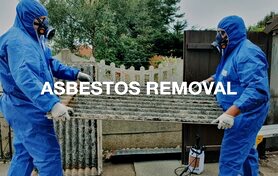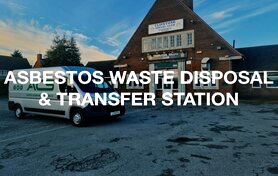Asbestos FAQ
See below to find the answers to some of our most frequently asked questions about asbestos & asbestos removal.
Asbestos FAQs and FAQs about ACS.
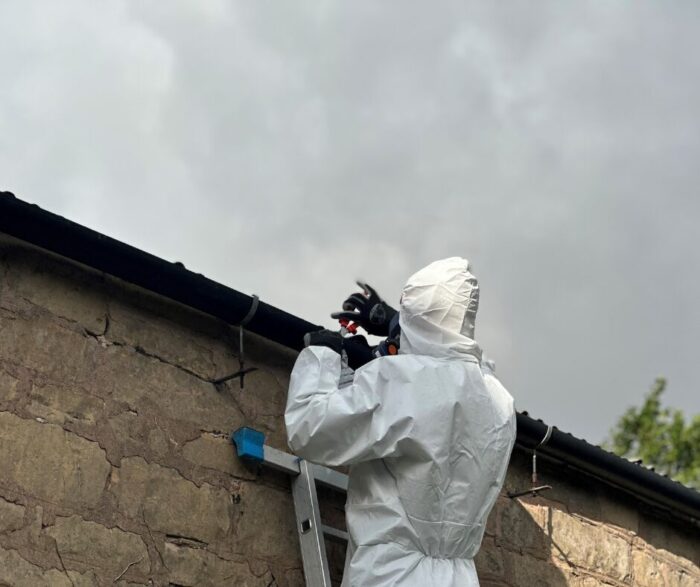
Don’t see your question listed? Feel free to call us on 01623 473214 or send us a quick message, and we’ll be happy to help.
Asbestos is a natural fibrous rock that is mined from the ground in different countries all around the world. The three most common types are Crocidolite (blue), Amosite (brown), and Chrysotile (white). Due to its superior qualities, wide availability, and affordability, it was heavily used in the construction of homes and buildings, right up until it was banned in the UK in 1999.
Asbestos was commonly used because of its strength, insulation and fire-retardant properties. Some common items that can contain asbestos in both domestic and commercial properties are; Garage or shed roofs and walls, textured coatings (Artex), rainwater goods such as guttering or pipes, soffits and fascia’s, soil pipes, roof tiles, floor tiles, bitumen adhesive. damp proof membranes, toilet cisterns, rope seals, gaskets, pipe insulation, ceiling tiles, doors, and insulation panels.
If asbestos-containing material is in its original situ, doing the job that it was intended for, and remains in good condition, then often the best course of action is to leave it in situ and manage and maintain its condition. The most significant danger of asbestos fibres is by inhalation, which can lead to health problems such as mesothelioma, asbestosis, and lung cancer. This is why it is critically important that if asbestos is to be removed, it is removed only by trained professionals.
We highly recommend that you do not attempt any asbestos removal yourself. Incorrect handling of the material can lead to the release of fibres, which can cause severe health problems when inhaled.
Contrary to some online myths, asbestos does not have a smell. It is generally odourless and tasteless, which makes it all the harder to detect. If asbestos did have a smell, we would highly discourage sniffing it due to the health risks posed by inhalation.
If your home was built before the year 2000 then it’s very possible that it could contain asbestos materials. It is important to remember that if asbestos materials are in good condition, in situ and doing the job they were designed to do, then they should pose very little immediate risk. Knowing the location of any asbestos materials in your home will provide you with the information you need to ensure you do not disturb them or if you are planning some intrusive DIY refurbishment work then it could be prudent to instruct an appropriate asbestos survey during the planning stages. You must remember too that if any tradesperson is carrying out work in your home then it becomes their place of work meaning that asbestos risks must be considered. An asbestos survey is the most effective way to identify any asbestos materials which may be present.
The purpose of an asbestos survey is to provide accurate information on the location, amount, and condition of asbestos-containing materials (ACMs) which enable you to manage the asbestos in your premises. A survey will assess the level of damage or deterioration in the ACM’s and whether remedial action is required or help identify all the ACMs to be removed before a refurbishment or demolition project. The survey information can also be used to prepare a record of the location of any asbestos, commonly called an asbestos register, and an asbestos plan for the building(s). The register should be used to inform the risk assessment on things like who could disturb asbestos on your premises and to establish the management plan to prevent such a disturbance.
The cost of an asbestos survey varies from site to site. Variable factors such as the number and size of buildings, number of floors, rooms, and areas, number of estimated samples, and any access requirements are some of the key elements taken into account when producing a quote for an asbestos survey. Give our team a call on 01623 473214 or complete the contact us form HERE to get your free, no-obligation quote.
A properly planned and executed management survey if maintained in the form of an asbestos register could last indefinitely. However, known ACMs within the asbestos register should be reinspected at regular intervals and at least annually to update the risk assessment and highlight any remedial actions required.
Yes, we offer a full range of asbestos services including surveying, testing, and removal. See our range of asbestos services here.

